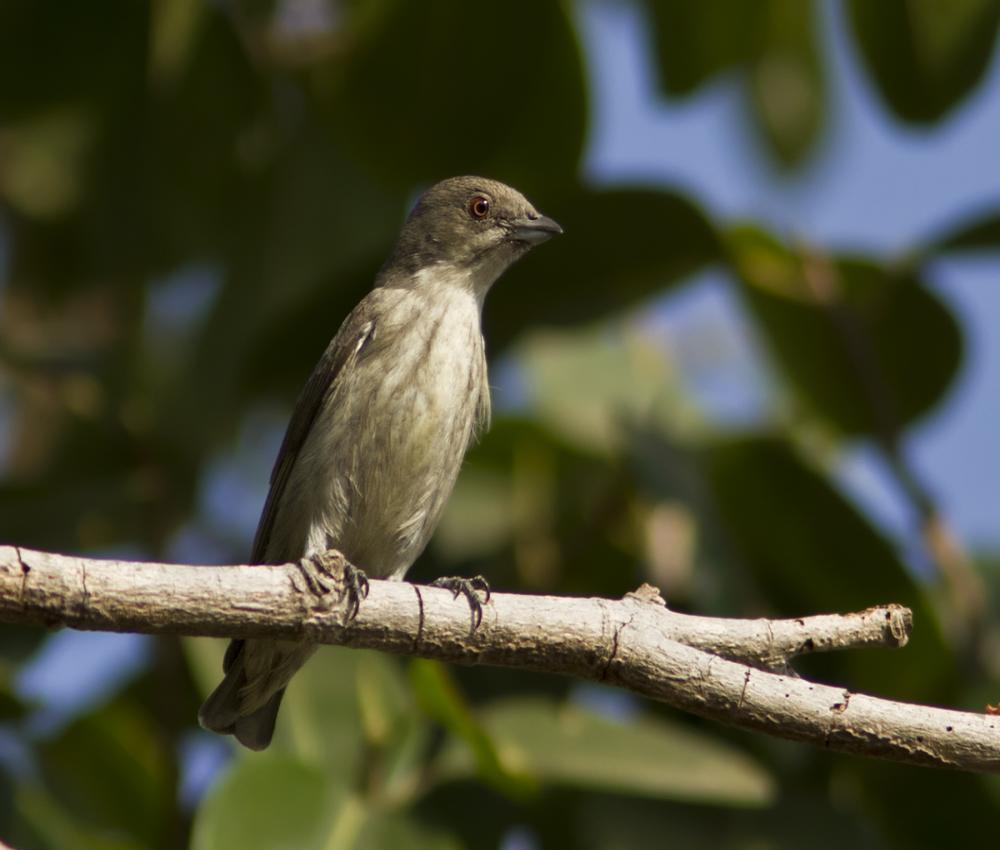
Dicaeum agile
TAXONOMY
Fringilla agilis Tickell, 1833, Bengal, India. Eleven subspecies.
OTHER COMMON NAMES
English: Striped flowerpecker; French: Dicйe а bec йpais;
German: Dickschnabel-Mistelfresser; Spanish: Pica Flor de
Pico Ancho.
PHYSICAL CHARACTERISTICS
4 in (10.2 cm); 0.32 oz (9 g). Olive-gray upperparts with
whitish, lores, breast, belly, and undertail coverts.
DISTRIBUTION
Pakistan, India, Sri Lanka, Bangladesh, Myanmar, Thailand,
Laos, north Vietnam, Malaysia, Sumatra, Java, and the Philippines.
HABITAT
Forests, woods, plantations, and gardens from sea-level up to
9,800 ft (3,000 m).
BEHAVIOR
Acrobatic feeder that joins mixed-species groups. Characteristically
wags its tail when perched.
FEEDING ECOLOGY AND DIET
Feeds in bushes and trees up to 100 ft (30 m) on wild fruits
and berries of figs and mistletoes, spiders, and insects.
REPRODUCTIVE BIOLOGY
Nest looks like a dead leaf suspended in a tree and resembles a
small pouch made of fibers, buds, vegetable down, and spiders’
webs with a side entrance. Lays clutch of two to four pale pink
eggs with speckles of red during January–August.
CONSERVATION STATUS
Not threatened. Common in most of its range but rare in Myanmar
and Indonesia.
SIGNIFICANCE TO HUMANS
None known.
Photo Gallery of - Thick-billed flowerpecker
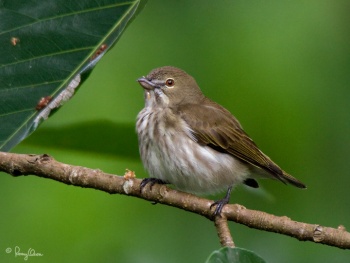
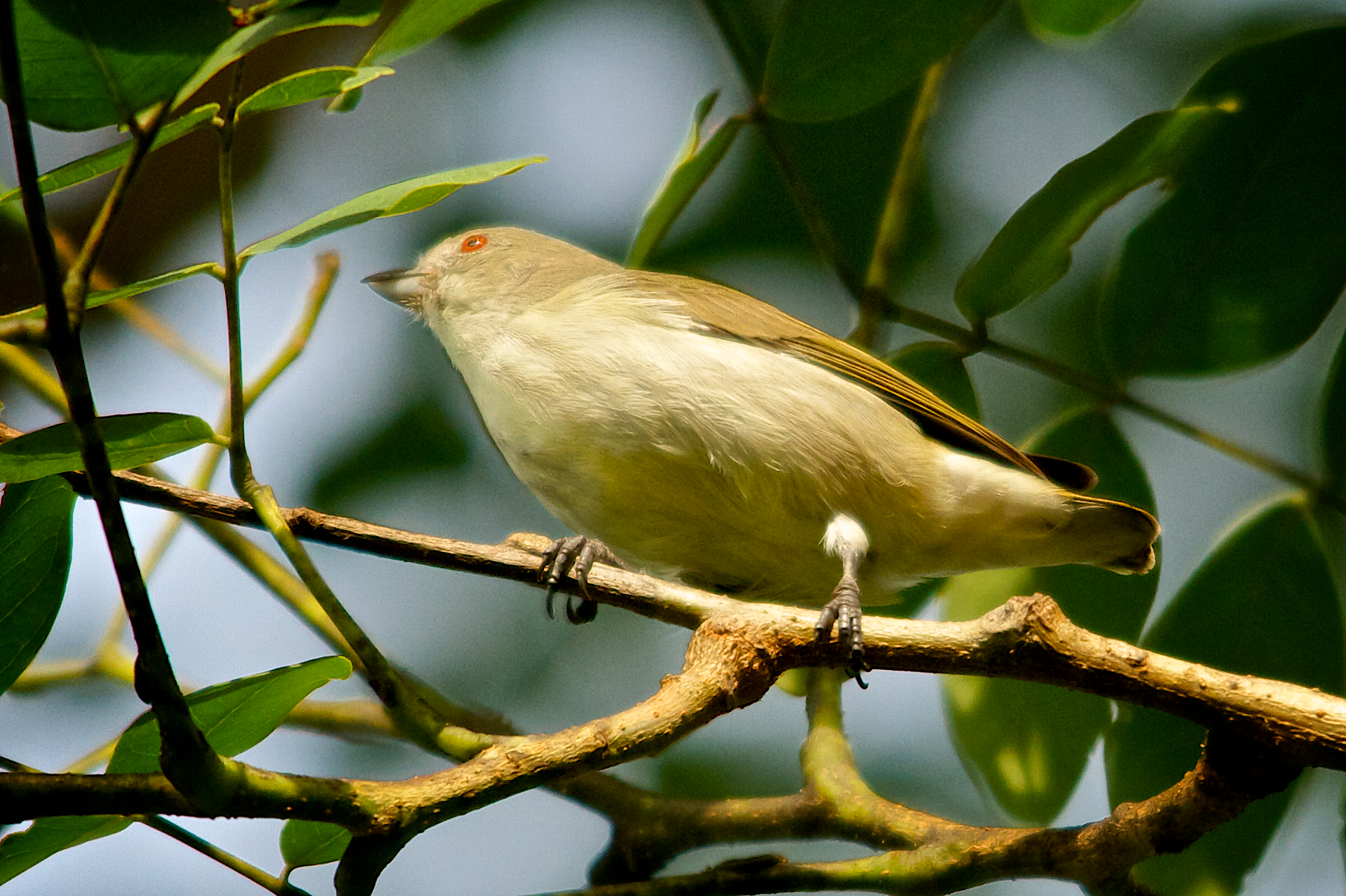
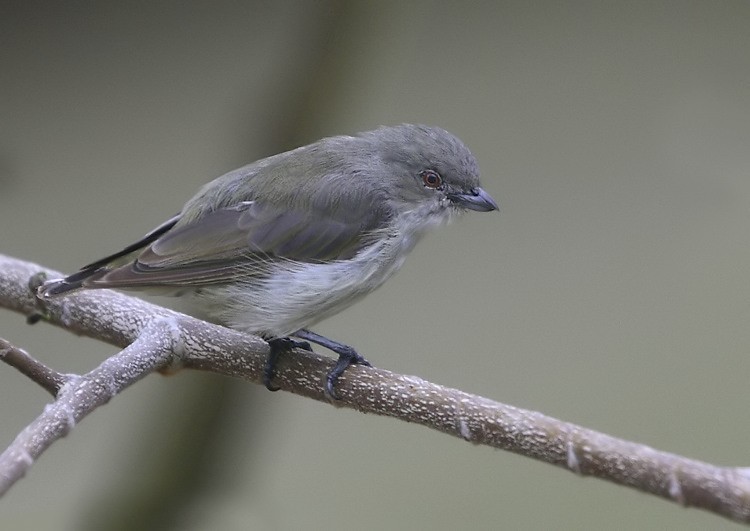
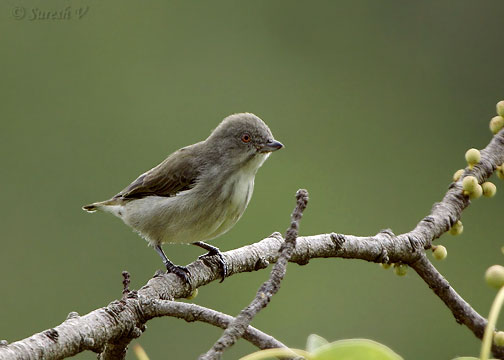
 Animalia Life
Animalia Life